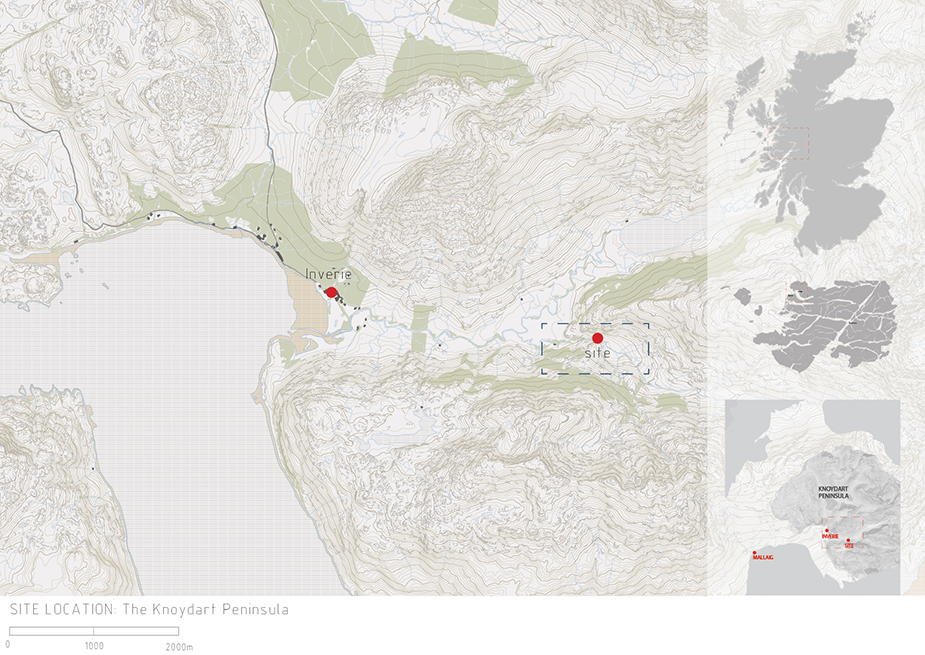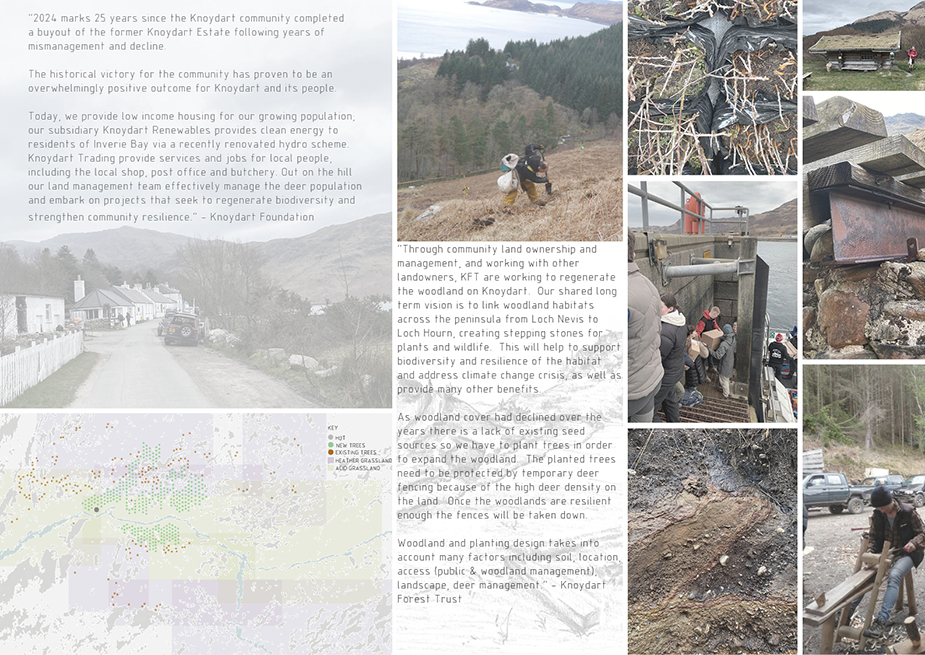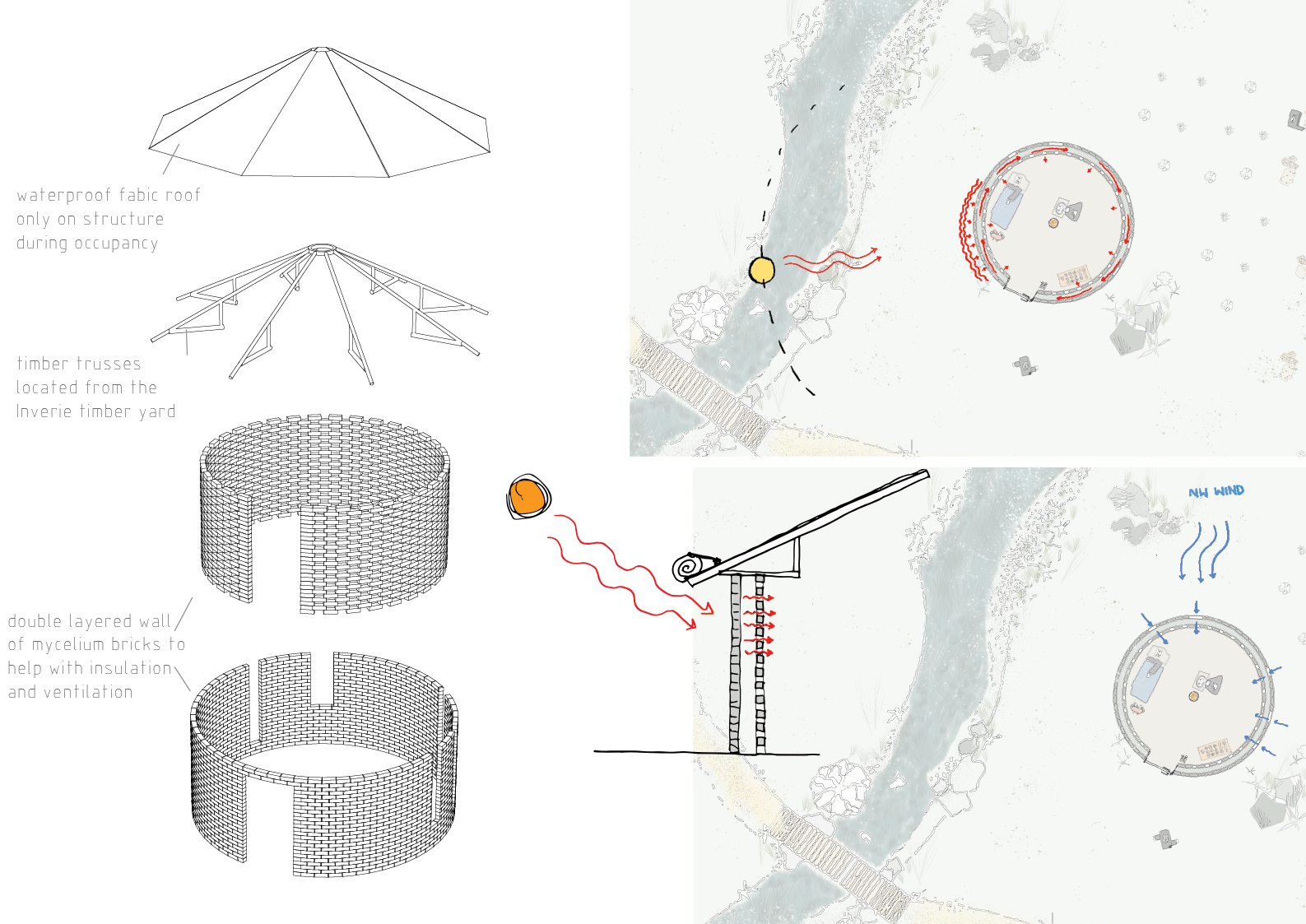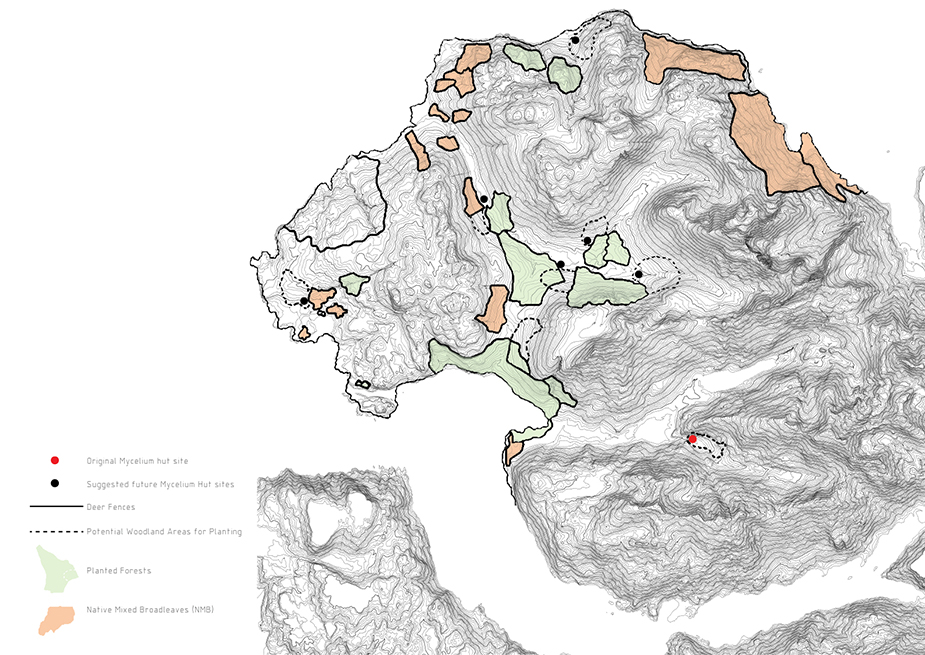Student awards 2024: interview with Ailsa Hutton
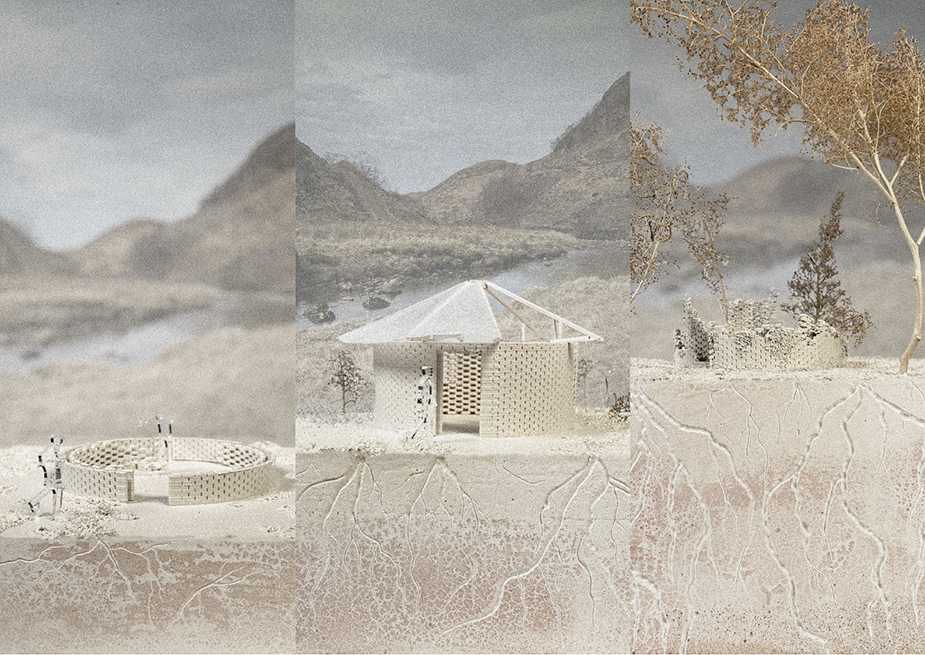
(October 2024) As part of the A&DS and RIAS Student Awards for Architecture 2024, Ailsa Hutton, Mackintosh School of Architecture, was awarded the Architecture and Design Scotland Award for Best 3rd Year Student and the Architecture and Design Scotland Designing in a Changing Climate Award for "The Hidden Network of Mycelium". In this interview she outlines her winning project and plans for the future.
How does it feel to win this award category?
I feel proud of myself having won this award. I think this is because this project isn’t like the output usually expected from 3rd year students, as it is very small scale and at first glance a ‘simple’ project. That’s why it is so important for a project like this to be recognised by the RIAS and Architecture and Design Scotland as complex and relying on more than architectural design.
I am excited that concepts like ‘fabric first’ and ‘ecological reciprocity’ are being accepted with an open-mind and open-arms by the community, as this is where architecture needs to go in the future.
What inspired you to create this project?
My inspiration for this project came from the resilience and passion of the local community on the Knoydart Peninsula. Their small community is taking full responsibility for their landscape and protecting all that lives there. These are attitudes that I wish were adopted in wider society especially when combating the climate crisis. I learnt a lot from the people of Knoydart and their ability to tackle any challenge in front of them.
I was inspired by a book called ‘Braiding Sweetgrass’ by Robin Wall Kimmerer, this author’s relationship with nature pushed me into researching micro-ecosystems and their impact on wider landscapes, which led me to the importance of mushrooms and mycelium.
What was the biggest challenge you experienced whilst creating this project?
One of the challenges I faced during this project was accepting the simplicity of the design as a positive aspect. This then allowed me to achieve in-depth research and have a well-rounded project.
The biggest challenge I faced during the project was convincing myself that this was the right direction for it to go. I was wary of using such an experimental material in a Scottish climate at first. However, when I fully embraced mycelium as a material, I then began to understand how its lack of durability may not be a negative aspect for this design and really the turning point was for the semi-permanent structure and not leaving a scar on the land.
What are your plans for the future?
I try not to think too far ahead but currently, I am doing my part 1 placement year. My practice is multi-disciplinary and very focused on achieving NET ZERO designs, so I hope to learn more about that aspect to carry forward into my education.
My plans for the future? Not really sure yet, it's impossible to know where the architecture world is going to go next but hopefully there’s lots of mycelium involved!


The Hidden Network of Mycelium project gallery
Judges’ comments: "Set in Knoydart Peninsula, this project enjoyed design, functionality, temporality and the opportunity to use a new bio building material – mycelium. The project explores, with a sensitive understanding, the limitations and realities of designing and building with bio-based materials. It not only considers long-term use, but what materials must deliver in reuse and in the short-term. The proposal is a semi-permanent structure to house a team on site during planting season, with a focus on improving soil structure to ensure the success of the new forest. The design is intentional to allow both construction and deconstruction to leave no harm. The quality of drawing and presentation in this project is very high. An exciting idea that is beautifully drawn."


